Opinion
ArtPrize Offers Delightful Surprises as Critics’ Picks are Revealed
Kate Gilmore's pink house is a highlight.
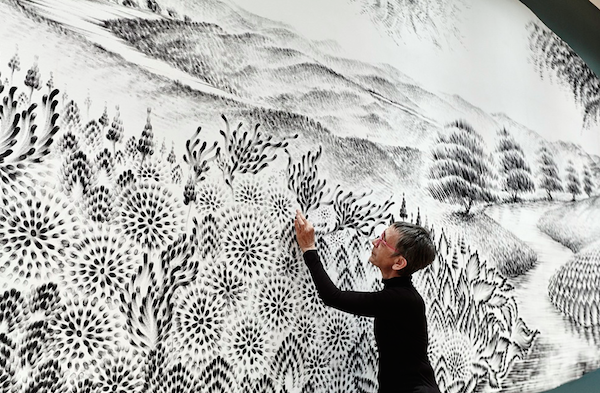
Kate Gilmore's pink house is a highlight.

We are now seven years into Michigan’s great ArtPrize experiment: host an art contest that anyone can enter for a massive cash prize, and see what happens. On Monday night, I was in the audience in Grand Rapids, as the “critics’ picks” for best artworks in the 2015 ArtPrize were unveiled, live on local station WOOD TV8.
The grinning hosts stepped lightly around terms like “installation” and “time-based media,” while assembled art-world experts seemed caffeinated for the cameras, explaining what had caught their eye from among this year’s 1,500-plus entries on view at a motley assortment of museums, galleries, schools, churches, and coffee shops across Grand Rapids. The whole thing had an endearing Artforum-meets-Anchorman vibe.
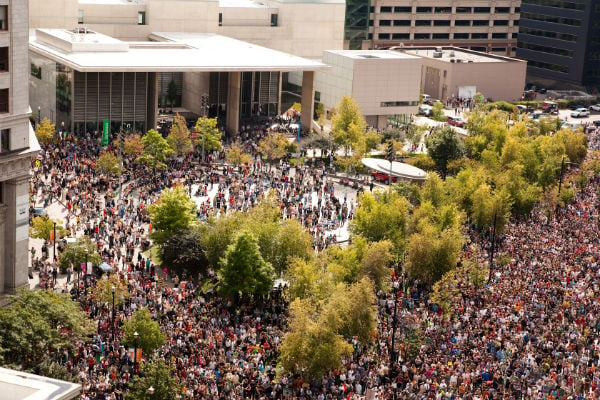
Crowds flood Rosa Parks circle for ArtPrize 2014.
Image: Courtesy ArtPrize.
The “critics’ picks” portion has become more prominent over time—the local public’s taste towards beatific depictions of Jesus as well as its penchant for novelty art was at risk of making the prize too uncool to draw wider attention—but the event’s distinguishing feature remains the fact that anyone can participate as an artist or as a voter. At $200,000, the “Public Vote Grand Prize” remains equal to that given out by the imported experts.
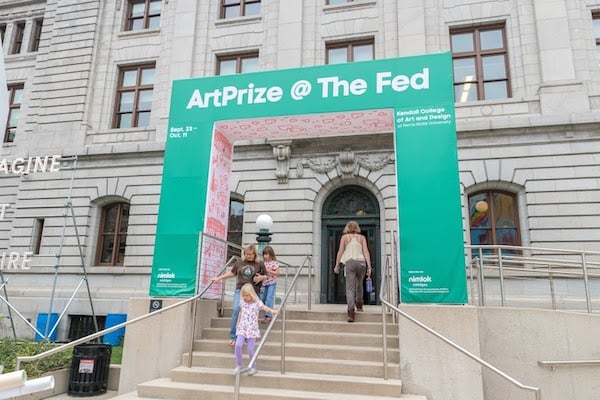
The exterior of one of the ArtPrize venues.
Photo: Courtesy ArtPrize.
By almost any measure, the idea has been a runaway success for this mid-sized Michigan city. With a daily participation of more than 23,000 people, ArtPrize 2014 topped the Art Newspaper list of most-visited “Big Ticket” art events worldwide, handily beating out such mega-events as Manifesta (a mere 12,400 a day) and the São Paulo Biennial (a piddling 5,900).
On the ground in central Grand Rapids, ArtPrize has the hectic and eclectic feeling typical of open studios, though its events are not confined to “studios” and the “open” part has been radically cranked up.
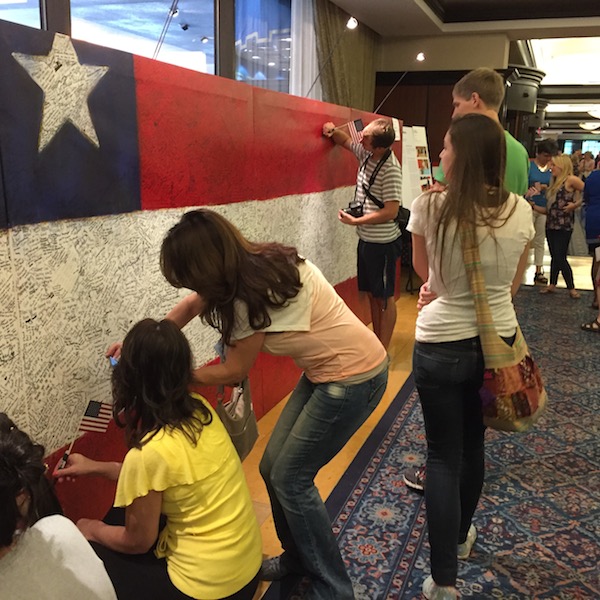
Pamela Alderman’s “touchable artwork,” Hometown Hero, encouraging visitors to leave messages in support of the troops, at the Amway Grand Hotel.
Photo: Ben Davis.
Organizing a festival that sprawls across dozens of venues throughout an entire urban center is a massive logistical and curatorial feat. For ArtPrize, this is done through a pre-show online process called “Connections.” Artists post what they want to display, and select where they might like to show; venues pick the artists that reflect their own particular tastes and values from this pool.
Lately the art world has seen a rash of art-tech startups pitching themselves as using the internet to disrupt traditional hierarchies. ArtPrize’s simple online-dating-style matchup has probably beaten them all as a game-changer, as evidenced by the massive new audiences it has produced. In retrospect, ArtPrize’s ascent is worth situating alongside the rise of the tech companies building empires on the “sharing economy,” with the untapped resource being amateur creative aspiration rather than cars or unrented rooms.
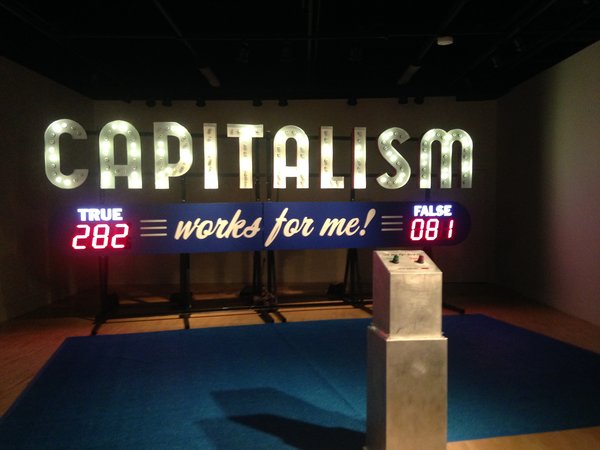
Steve Lambert, Capitalism Works For Me: True/False at the 2014 ArtPrize.
Photo: Cait Munro.
Last year, the gates of ArtPrize’s radical openness came back to hit it in the face, as artist Steve Lambert took the opportunity of his entry’s nomination to very publicly call attention to the less warm-and-fuzzy side of Grand Rapids’s conservative dynasty, the DeVos family (of Amway fame), of which ArtPrize founder Rick DeVos is a scion. The DeVoses have been a top funder of anti-LGBT initiatives and pushed Michigan’s conversion to an anti-labor “Right to Work” state.
![ArtPrize jurors [left] are interviewed by local media on Grand Rapids' WOOD TV](https://news.artnet.com/app/news-upload/2015/09/wood-tv.jpg)
ArtPrize jurors Justine Ludwig, Steven Matijcio, Sarah Urist Green, Robin Cembalest, Shari Frilot are interviewed by local media on Grand Rapids’ WOOD TV.
Photo: Ben Davis.
This year at the Grand Rapids Art Museum (GRAM), curator Ron Platt has put together a crackerjack ArtPrize showcase, dubbed “Nature/Nurture,” which seems almost custom-engineered to thwart accusations of conservatism, aesthetic or otherwise.
There are works engineered to delight, like New York-based Judith Braun’s lively site-specific mural conjuring a layered landscape via expert swooshes of her charcoal-dipped fingers. But there are also works designed to challenge, like St. Louis photographer Jess Dugan’s photo series “Transcendence,” crisp portraits of people who fall outside of the traditional gender binary.
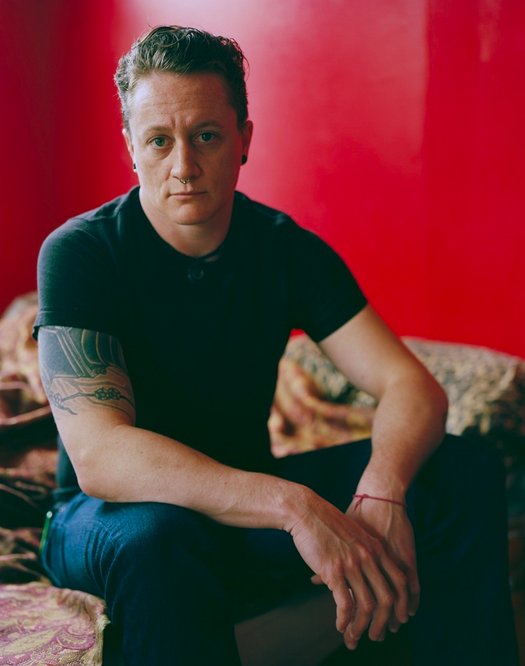
From Jess Dugan’s “Transcendence” series.
Photo: Courtesy ArtPrize.
Almost every work at the GRAM feels well selected, but two bear mentioning because they made the judges’ lists of finalists: Grand Rapids’s own Monroe Aki O’Bryant (aka Akibang), whose graphic and empathetic photo series restages acts of violence as a kind of memorial/catharsis for black residents of the city.
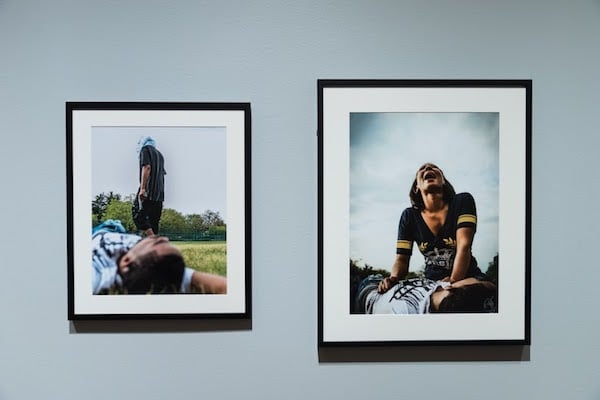
Photos from “A Fearless Brother Project Presents: Realistic Neglects—A Graphic Series” by Akibang.
Image: Courtesy ArtPrize.
The other was the phalanx of ingenious, glittering low-rider bicycles combined with Native American motifs from Dylan Miner, director of American Indian Studies at Michigan State University, a collaboration with indigenous youth in Canada in the process of reconnecting with their heritage. Either makes a strong contender for the final prize.
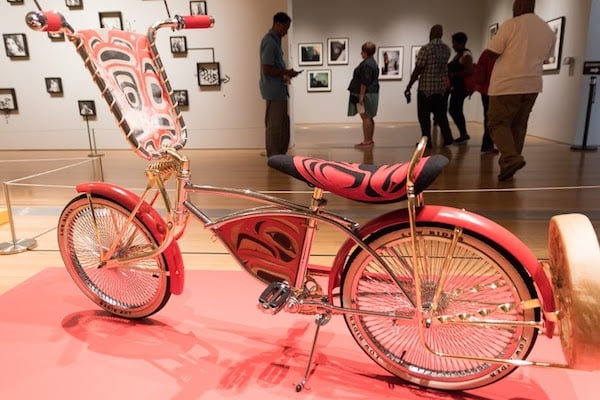
Dylan Miner’s Anishinaabensag Biimskowebshkigewag (Native Kids Ride Bikes) at the Grand Rapids Art Museum.
Photo: Ben Davis.
For all but one of the previous years, a group called Site:Lab which specializes in pop-up shows has taken ArtPrize’s “Best Venue” award. Visiting their 2015 initiative, well out of the central hub of venues on Rumsey Street, you see why. The Site:Lab team has helped transform a series of formerly abandoned houses, slated to be made into affordable housing by Habitat for Humanity, into art installations.
A highlight is Brooklyn artist Kate Gilmore’s house, hot pink on the outside and “Flirt Alert” red within, which at night comes alive with women perched in swings in each of the windows, the structure pulsing with feminine energy. (Gilmore is also a finalist.)
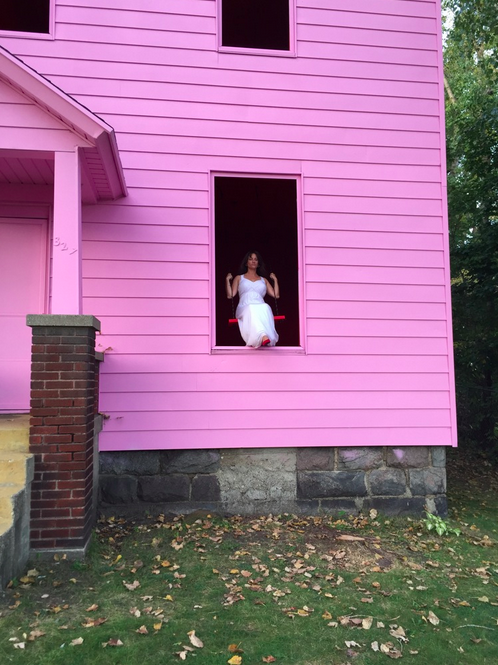
Kate Gilmore’s installation at Site:Lab.
Image: Courtesy ArtPrize.
The judges have done their work well. Given the nature of the ArtPrize, though, I would be remiss here if I didn’t pick something from the pool beyond their picks. At the Cathedral Square building, seat of the 11th bishop of the Diocese of Grand Rapids, you might almost miss the unassuming wooden sculpture from Michigan artist Roger Will, displayed unassumingly on a pedestal. It appears as a lattice of polished wood, like a puff of brown smoke hit with a freeze ray.
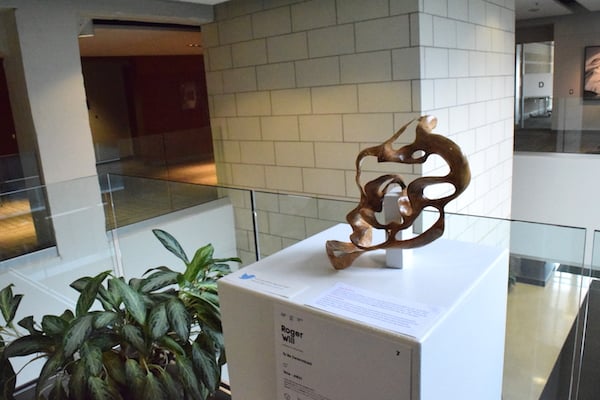
To Be Determined by Roger Will.
Photo: Ben Davis.
I might have missed the piece if one ArtPrize fan hadn’t stopped to explain the story behind it to me: Will’s work is made by salvaging bits of dead trees, stripping away the rotted parts, polishing whatever is left.
The more I have thought about it, the more Will’s little work also stands as a rather perfect emblem for the whole affair, whose insight seems to be that, in terms of the art economy, there is as much value to be mined in the process of sifting through the messy parts as there is in simply celebrating the final, polished thing.
ArtPrize continues through October 11 in Grand Rapids, Michigan.